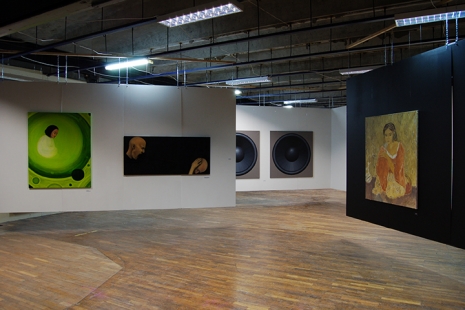The paintings in the exhibition capture various reflections of the emotional world of a woman’s life, fragments of life itself and internal reflections.
Mara Ljutjuk has always had deep respect for women, and women have played a very important role in her life. They have inspired, charmed and surprised her a lot.
She is still amazed by the controversy of women, this enchanting blend of vitality and sensitivity. According to him, women have been given an incredible ability to be both captivatingly mysterious and purposefully resilient. They are exciting for the artist precisely because of the complexity and power of their inner world.
According to Mara Ljutjuk, there is a personal beauty hidden in EVERY woman, which flourishes especially when she has been able to use her abilities, meet her needs and reach her goals. Women are also given the greatest power of life – the ability to LOVE.
Some women live their lives with a bright flame, while others live with restrained determination. Both of them leave unforgettable traces in their own way and bring something especially unique to this world.
Mara Ljutjuk was born in Tallinn in 1978. He graduated from the Estonian Academy of Arts with a degree in painting in 2001 and also obtained a master’s degree in education. He studied liberal arts in 2007 at the Universidad Politécnica in Valencia, Spain. Since 2006 he has been a member of the Estonian Artists ‘Union and the Estonian Painters’ Union. Since 2004 he has had several solo exhibitions and participated in several joint exhibitions since 2000.
In addition to painting, Mara is curating and designing exhibitions, and is actively involved in curating and organizing the program of her grandfather, the Evald Okas Museum, and the Telliskivi Creative City Art Festival, I Don’t Understand.
The year 2019. he was awarded the Gallery-G Art Prize. 2020 a. he was nominated for the Konrald Hill Prize.
Mara has three children (b. 2009/2012/2015) and she lives and works in Tallinn.
Mara’s paintings are simple in form and tell stories that everyone can identify with. Motifs that may seem familiar because they reflect moments from the world around us, decipher human relationships, and draw our attention to the richness of life. Mara’s paintings often contain moments that last only a short time, fragments of life, scenes some of which speak more directly, some more metaphorically about everyday and circular movement.
The exhibition is supported by: Estonian Cultural Endowment, Rapla County Local Government Development Fund, Nöff and RKKK.
The exhibition is open until April 10
The exhibition takes place within the framework of the Women’s Nights Film Festival NÖFF, which is an early spring festival in Rapla. The theme for 2022 is FORGOTTEN and UNFORGETTED WOMEN
Check out the festival program on the website: noff.ee
We recommend:
On Sunday, March 13 at 2 pm in Rapla cinema.
LECTURE BY ARTIST SCIENTIST KATRIN KIVIMAA with a film
“Helene Schjerfbeck’s observation or how one of Finland’s most popular artists became a great discovery in international art life”
The life and career of Helene Schjerfbeck (1862-1946), one of the most famous Finnish artists, was complex in many ways. Health problems, economic constraints or private difficulties did not prevent an exceptionally talented young woman from obtaining a good art education in Finland and Western Europe. However, professional recognition did not come easily: during her lifetime, her art was only appreciated in Finland and Sweden when Helene was old. Today, Schjerfbeck is considered one of the most prominent Finnish artists and his exhibitions are popular all over the world. He has recently been compared to Edvard Munch, for example. The film “Helene” is about a period when a middle-aged artist living in solitude is visited by art merchant Gösta Stenman, who believes in Helene’s work and brings to her life a young amateur artist, Einar Reuter, who writes Helene’s biography decades later.
Katrin Kivimaa is an art historian and art critic, a senior researcher at the Estonian Academy of Arts. Her main research interests are the creation of female artists and modern and contemporary Estonian art. He has worked as a professor of art history at the Estonian Academy of Arts (2006-2017) and as the art editor of the cultural magazine SIRP (1993-1997). In 2010, she co-curated the exhibition “Woman in Soviet Estonian Art” at the KUMU Art Museum, and in 2008-2010 participated in the international working group of the major project “Gender Check: Femininity and Masculinity in the Art of Eastern Europe” in Vienna and Warsaw. In 2009, she was awarded the Ervin Pütsepa Prize for the best art monograph of the year “National and Modern Femininity in Estonian Art, 1850-2000”. In addition to academic publications, he publishes art criticism in Estonian cultural publications and dailies.





